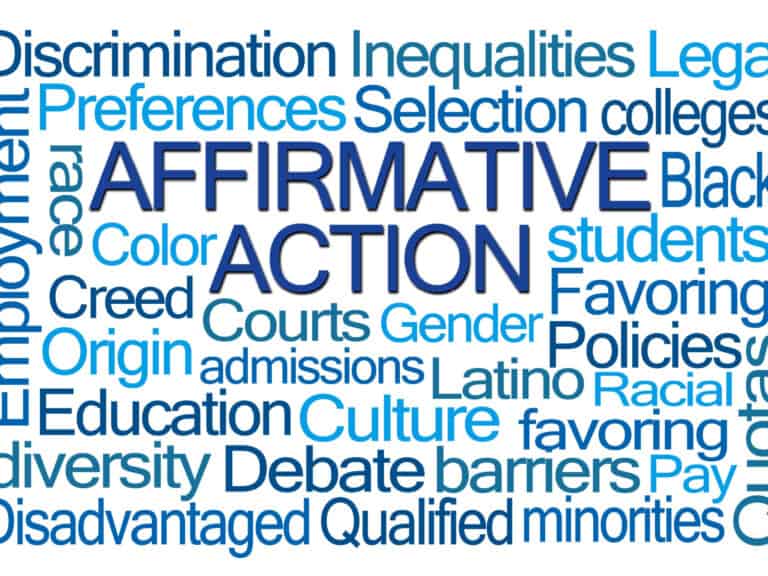How Late Is Too Late to Apply to College
The majority of colleges stop accepting early applications on November 1 and regular applications on March 1. However, some individual colleges have deadlines varying from October 15 to August 31. Rolling admissions schools keep accepting applications for the fall term until hitting their enrollment targets.
Other than getting a rejection letter, missing the deadline for the preferred admission plan is another fear of many college-bound teenagers, which is well justified given the fact that the college application process can be long and tricky.
Failure to apply by the deadline does not necessarily mean the end of one’s dream of becoming a degree holder.
Late Application Deadlines for Colleges
College applicants consider many factors in the quest to find the best-fit school, including among other things financial, academic and social matters.
Similarly, they have to get their hands on a number of documents and materials, ranging from college reports to recommendation letters, the number and kinds of which can vary from institution to institution.
Finding the right schools to shortlist and obtaining all the requirements is pointless if students forget to take college deadlines into account, which will allow them to know up to when they can submit their applications.
The good news, however, is that late applications are still accepted by some schools.
As a matter of fact, some colleges continue to welcome and review applications long after others have stopped doing so. There are also those that accept applications all year round or until there are still slots to fill.
So, in other words, in terms of applying to college, there is practically no such thing as too late to get into a postsecondary program.
When Do College Applications Open?
Most colleges and universities in the US start accepting applications on August 1. Similarly, it’s also on the same date when the Common App, which is used by more than 1,000 degree-granting institutions, launches, while the Coalition App is available all year round.
Some colleges, though, accept applications and issue admissions decisions, too, throughout the year.
High school students getting ready for their college careers check out many different things in postsecondary schools they are planning on shortlisting, including college costs, programs offered and campus life.
It’s also important to check a college’s various admission plans.
Applying via an early admission plan, in most cases, increases a student’s chances of getting in.
Similarly, early application, whether via early decision or early action or regular decision, allows a college-bound teen to receive a high financial aid offer as aid is commonly allocated on a first-come, first-served basis, although the amount can also be impacted by family income.
Knowing when colleges start welcoming applications allows junior or senior high school students to start gathering all requirements, thus allowing them to have enough time to submit everything before the deadline.
When Do College Applications Close?
College applications close past admission plan deadlines, which means institutions stop accepting applications after each admission plan option for the admissions cycle.
Some colleges may also have different deadlines for in-state applicants and out-of-state applicants, while others, particularly those with a rolling admissions policy, accept applications all year round.
High school students who are planning on attending college after earning their secondary school diploma must take note of the different admission plans their target institutions offer.
Doing so allows them to know the earliest date they can apply as well as the latest date they can apply.
Although a massive fraction of all college-bound kids apply to non-rolling admissions schools during the regular decision round, some choose to apply ahead of everybody else through a variety of early application program options like early decision and early action to increase their admissions chances, demonstrate interest or get the application done and over with.
Different admission plans have different deadlines, and colleges stop accepting applications after the following dates:
| Admission Plan | Deadline |
|---|---|
| Early decision 1 (ED1) | 1-Nov |
| Early decision 2 (ED2) | 1-Jan |
| Early decision 3 (ED3) | 31-Jan |
| Early action 1 (EA1) | 1-Nov |
| Early action 2 (EA2) | 15-Nov |
| Restrictive early action (REA) | 1-Nov |
| Priority deadline | 1-Nov |
| Regular decision (RD) | 1-Jan |
| Rolling admission (RA) | Varies |
In some instances, the last day to apply to colleges depends on the preferred admission plan and the applicant’s residence.
Georgia Institute of Technology or more commonly known as Georgia Tech, for instance, stops accepting applications via Early Action 1, exclusive for in-state students, on October 17. The university, meanwhile, stops accepting applications via Early Action 2, reserved for out-of-state students only, on November 1.
When Is It Too Late to Apply for Colleges?
Although it may, at times, be too late to apply to one’s top-choice school after the hard deadline, a student may still apply to other colleges, particularly those with later application deadlines as well as those with a rolling admissions policy.
Needless to say, not handing in an application on time doesn’t have to mean time’s up on one’s college dreams.
While some colleges may be strict on deadlines, others may still accept late applications if applicants have a valid reason for failing to beat the deadline or the enrollment target is yet to be met.
Late applications for early admission plans, on the other hand, are usually automatically added to the application pool for the subsequent application deadline.
The bottom line is that there are options for late applicants, most of which will still enable them to be a part of the incoming class, albeit usually at another college or via a different admission plan.
Does the Common App Let You Submit After Deadline?
Submission of college applications after the deadline is not allowed by the Common App. The end of the deadline date, though, is in the applicant’s time zone and not in the college’s time zone.
An applicant who is in a different time zone than that of the college may still submit his or her application even after the dashboard says “deadline has passed”.
When applying to a top-choice college, a very important matter to look into is the application deadline. Doing so allows the student to spring into action at the right time so as not to miss the deadline set by the school.
Applying via the Common App keeps an applicant from submitting his or her application after the deadline.
“Deadline has passed” — nothing can be more frustrating to a college-bound teen than seeing this message on the Common App’s dashboard.
Needless to say, the individual has failed to beat the deadline and he or she has no other choice but to settle with another school with a later deadline or apply to the same college regular decision if an early admission plan was missed.
However, it’s important to point out that the Common App considers the student’s time zone and the time zone of the college he or she is applying to separately, which means that being in a different time zone brings hope.
An applicant in a different time zone has until 11:59 pm in his or her local time to submit the Common App.
Successfully submitting the application on or before the given time means that the Common App has sent it to the institution of choosing and the college will review it together with the rest of the applications in the same pool.
Do Colleges Look at Applications Before the Deadline?
Some colleges start looking at applications before the deadline, usually after accumulating a critical number of applications for a particular admission plan. Some postsecondary institutions, on the other hand, wait until after the admission plan’s deadline before they start reviewing applications.
Early submission for a particular plan does not usually pose any admissions advantage.
Admission plans can vary from one college to the next — while most have a full range of admission programs, ranging from ED 1 and ED 2 to regular decision, others only have a few of them.
There are also those with no other admission plan as what’s in effect is a rolling admissions policy.
Rolling Admission colleges keep on accepting applications for as long as there are available slots.
In addition, their admissions officers review applications as they are received, and then allow RA applicants to hear back within 4 to 6 weeks, although there are also some RA schools that issue decision notifications in as fast as 2 to 3 weeks.
Some non-RA institutions may check out applications as they reach the admissions office, whether soon after or after some time to prevent the accumulation of applications. Yet, others prefer to wait for the application deadline to arrive.
While applying early comes with perks, sending an application early in a particular admission plan, such as RD, doesn’t.
What Happens If You Submit an Application After the Deadline?
The submission of an application after the deadline may result in the application not being reviewed or being reviewed but with lower chances of getting a favorable assessment given the applicant’s tardiness.
An application meant for an early admission plan automatically goes to the regular decision application pool if it misses the early action deadline.
Because it’s not uncommon for them to receive an enormous number of applications each time, elite colleges and universities tend to refuse late applications as they have a lot on their plate already.
At some less prestigious schools, however, late applications may be welcomed and reviewed, too.
Students who fail to meet the application deadline should immediately get in touch with their preferred colleges — because late applicants are commonplace, some institutions might even have a protocol for the matter.
However, it’s likely for schools that welcome late applications to refuse late applicants who lack any valid reason.
It’s likely, too, for late applicants to get a rejection letter as their tardiness puts them in a bad light unless their applications are impressive enough for admissions officers to offer them slots already given to less qualified students.
On the other hand, applicants who are unable to hand in their applications on or before the early admission program deadline may choose to apply regular decision.
Usually, though, there’s no need for them to do so (apply RD to the same school) because their EA applications will end up in the RD application pool anyway to be reviewed with the rest during the RD round.
The same is true if they get a deferral instead of a rejection during an early round.
Applying to a college with a late deadline or no application deadline, particularly one with a rolling admission policy, is an option for students who are unable to meet the deadlines set by their prospective institutions of higher education.
Is It Too Late to Apply for Financial Aid?
Applying for financial aid is never too late at some colleges, although there’s no guarantee that late applicants can get aid, especially given that some form of financial aid is given on a first-come, first-served basis.
It’s therefore recommended for students who demonstrate the need to file the FAFSA form as soon as it becomes available every October 1 of the year.
Like applying to colleges and universities, applying for financial aid comes with a deadline, too.
College-bound teens or college students themselves have a total of 8 months to complete and submit the FAFSA — the form becomes available on October 1 and has to be submitted on or before June 30.
So, when is it too late to submit FAFSA?
As far as filing the FAFSA form is concerned, college applicants have to keep in mind 3 different deadlines: the college deadline, the state deadline and the federal deadline. Making things confusing is that many institutions have priority deadlines, which are intended for students who wish to receive the most money from the college to beat.
Among the different FAFSA deadlines, the college deadline is typically the earliest. Deadlines can vary from school to school, but they are usually set well before the academic year commences.
The second deadline is set by individual states, which can either come as a hard deadline or a suggested date to make sure that applicants get priority consideration for college money — many states have limited financial aid funds.
June 30 is the last deadline, the federal deadline, which is set by the US Department Education itself.
After the said deadline, the FAFSA form becomes unavailable. It goes without saying that students may no longer download, fill out and submit it.
However, given that June 30 is the last day for filing the FAFSA form, students can technically go through an entire year of college before accessing the FAFSA. Still, as mentioned earlier, it’s better to submit it as soon as possible.
20 Best Colleges With Late Application Deadlines
Although most regular decision deadlines at most colleges fall at the beginning of January, there are many higher education institutions with late applications, which means that they continue to accept applicants even though others have stopped doing so.
Many of them are good colleges, too, that could meet most or all best-fit school qualities of certain students.
Some applicants are late because they are lazy or tardy. However, others are late as a result of extraneous circumstances that have something to do with themselves or family or also high school counselors or teachers.
Either way, many colleges choose to not rob them of the opportunity to be a part of the incoming class.
Institutions of higher education with late application deadlines are often dismissed as bad colleges.
While it may be true that many of them have late admission plans to make sure they meet their enrollment goals, others may simply want to make an undergraduate degree accessible to those who, for some reason, are unable to meet deadlines elsewhere.
It doesn’t necessarily mean, however, that they are not as good as the rest. Although some good ones may not be on the same level as the Ivy Leagues and other top-tier schools, they, nonetheless, can still meet expectations.
Top colleges still accepting applications past the usual January 1 and January 15 RD deadlines are found below:
| University | Application Deadline |
|---|---|
| Baylor University | 1-Feb |
| Bradley University | 1-Feb |
| DePaul University | 1-Feb |
| Miami University | 1-Feb |
| Temple University | 1-Feb |
| University of New Hampshire | 1-Feb |
| University of Kentucky | 15-Feb |
| New Jersey Institute of Technology | 1-Mar |
| University of Cincinnati | 1-Mar |
| Creighton University | 15-Mar |
| University of Nebraska – Lincoln | 1-Apr |
| University of South Florida | 1-Apr |
| Clemson University | 1-May |
| University of Arizona | 1-May |
| University of Kansas | 1-May |
| Olivet Nazarene University | 15-May |
| Auburn University | 1-Jun |
| Salem State University | 1-Jun |
| Keystone College | 15-Jun |
| Oregon State University | 15-Jun |
20 Best Colleges With Rolling Admissions
Rolling admissions is a college admissions policy used by many institutions of higher education to admit first-time, first-year applicants to their undergraduate programs.
Colleges that use the said admission program accept applications all year round and review them as they are received, unlike non-RA institutions that stop accepting applications after a hard deadline.
Applying to an RA college means the student can forget about late applications.
However, it doesn’t necessarily mean that college-bound teens need not spring into action as quickly as they possibly can as having all available slots filled means that applicants who apply later may not be accepted to the incoming class.
For the incoming class, RA schools may start accepting applications as early as anywhere from July to August.
However, many colleges that follow a rolling admissions policy have priority deadlines, which are intended for students who wish for their applications to be given utmost consideration such as for a competitive program or a program with limited slots.
Meeting priority deadlines can also be beneficial for low-income students.
“Within the application window, there may be a priority deadline. This means that although you can apply any time, you may be guaranteed to receive a decision by a certain date or receive consideration for scholarships & financial aid if you apply by the priority deadline. For example, at USF, you can apply any time before March 1, but you will be automatically considered for merit-based admissions scholarships if you apply by Jan. 15” (Carlevatti, 2022).
Some colleges, meanwhile, require RA applicants to apply on or before a certain date to get into the incoming class. At Craven Community College, for instance, students must apply RA 8 weeks before classes start.
Fact: having a rolling admissions policy doesn’t mean right away having a 100% acceptance rate.
The Pennsylvania State University, for instance, is an RA school. Despite this, it has a 58% acceptance rate only. Appalachian Bible College, which also has an RA admissions policy, has an even lower acceptance rate of 49%.
Of course, some RA colleges and universities have 100% acceptance rates such as Bellevue University and Columbia Southern University.
Meanwhile, schools with an open admission policy have acceptance rates of 100% for they do not turn down applicants for as long as they have the minimum admissions requirement, which is a high school diploma or an equivalent.
Top colleges with no application deadlines as a result of having a rolling admissions policy are listed below:
| University | Location |
|---|---|
| Arizona State University | Tempe, Arizona |
| Arkansas State University | Jonesboro, Arkansas |
| Binghamton University – SUNY | Binghamton, New York |
| Clemson University | Clemson, South Carolina |
| Creighton University | Omaha, Nebraska |
| Indiana University – Bloomington | Bloomington, Indiana |
| Loyola University Chicago | Chicago, Illinois |
| Michigan State University | East Lansing, Michigan |
| New Jersey Institute of Technology | Newark, New Jersey |
| Pacific University | Forest Grove, Oregon |
| Pennsylvania State University | State College, Pennsylvania |
| Purdue University | West Lafayette, Indiana |
| Rutgers University | New Brunswick, New Jersey |
| Saint Louis University | St. Louis, Missouri |
| University at Buffalo – SUNY | Buffalo, New York |
| University of Alabama | Tuscaloosa, Alabama |
| University of Minnesota – Twin Cities | Minneapolis and St. Paul, Minnesota |
| University of New Hampshire | Durham, New Hampshire |
| University of Pittsburgh | Pittsburgh, Pennsylvania |
| University of Tennessee | Knoxville, Tennessee |
Can You Still Apply to College for Fall Term?
Applying to college for the fall term is possible at postsecondary institutions that still accept applications from prospective first-time, first-year students (as well as transfer students) who wish to start their college careers in the fall.
The College Openings Update: Options for Qualified Students, which is published annually by the National Association for College Admission Counseling (NACAC) simplifies the task of finding schools where students may apply for the upcoming fall term. According to the organization itself, the list is updated daily and printable, too.
However, the list is limited to NACAC member colleges only, which amounts to nearly 1,500 institutions.
When is the Best Time to Apply for Colleges?
The best time to apply for colleges is via an admission plan that suits the needs and preferences as well as the status of the application of the student.
While applying through an early program such as early decision or early action may be suitable for some high school students, applying regular decision may be more beneficial for some college-bound teens.
College applicants have a number of admission plans to choose from, including ED, EA and RD and a few others in between such as those with more than a single round and those with a restrictive form.
In choosing, students must consider the readiness of their applications and willingness to commit to a school.
High-performing students, for instance, who are happy with their current GPA and test scores and already have requested required documents from counselors and teachers may apply ED, especially if they like to attend their top-choice schools regardless of financial aid offer.
They may also choose to apply EA if they are not ready to commit to only a single college.
On the other hand, students who feel that their senior grades or later SAT or ACT scores could boost their admissions chances may consider applying RD together with the majority of all high schoolers gearing up for higher education.
When it comes to deciding on the best time to apply, students should check not only the pros but also the cons.
It’s true that applying ED can help increase chances of getting in as the said early admission plan usually comes with acceptance rates higher than a later admission program such as RD.
However, students will have to compete against strong applicants and need to complete their applications earlier than everybody else to increase the success rate of an ED application.
Meanwhile, although RD applicants need not act quickly to beat an early admission plan deadline, the remaining months of their high school careers may prove to be more hectic and exhausting than those of ED applicants.
When is It Too Late to Transfer Colleges?
Transferring colleges is considered too late if it will set back the student’s graduation timelines substantially.
While it’s technically never too late to switch institutions, it’s after completing 1 to 3 years of college when students may consider switching schools because some colleges require transferees to complete the remaining 30 to 60 credits there to earn a degree.
It’s not uncommon for some college students, especially those from low-income backgrounds, to complete the first 2 years of higher education at a community college and complete the rest at a 4-year school to cut college costs.
Whether transferring from a 2-year or a 4-year school, about a third of students switch colleges at least once, according to Princeton Review.
Strictly speaking, there’s no such thing as being too late to continue one’s pursuit of an undergraduate degree at another college.
However, students must take into account important factors, particularly those that can impact the completion time of their academic programs as well as the total cost of working on a college diploma.
For instance, they should look into how many earned credits can transfer with them. It’s also a must for them to determine how many credits the colleges they wish to transfer to require them to complete there for them to graduate.
Transferring colleges usually involves a different process from applying as a first-time, first-year student. In most instances, transfer applicants have a later deadline to beat, which gives them enough time to polish their applications.
However, at most colleges and universities, it’s harder to get in as transfer students due to the usually lower transfer application acceptance rates.
Community Colleges Application Deadline
The vast majority of community colleges have a rolling admissions policy, which means that they accept applications all year round or at least while there are still available seats to fill.
Some community colleges, meanwhile, have hard application deadlines, typically by early to mid-August for the fall semester and early to mid-December for the spring semester.
Getting into community colleges is considerably easier than at most average institutions of higher education.
“Compared with other institution types, community colleges are more accessible with fewer application barriers; comparatively affordable tuition costs; and accessible locations, including rural and inner-city areas” (Ginder et al., 2014).
In most instances, individuals who wish to earn an associate degree from a 2-year institution need not worry about missing any application deadlines as chances are that the community colleges in their respective areas are rolling admissions.
So, in other words, their admissions officers continually accept and review applications throughout the year.
However, it’s not unlikely for many RA community colleges (and also some 4-year schools) to have a hard deadline for priority applicants, including those who wish to obtain the best possible financial aid offer.
Some competitive or high-demand community college programs, such as nursing, may be harder to get into.
This is true despite a community college having an open admissions policy, which means that anyone with a high school diploma or GED certificate may apply and get in, too.
As such, in many situations, a student’s application must be in on or before the set deadline, if any, and also qualify for the program of his or her choosing to get in.
Applying early, still, is encouraged by many rolling admissions schools and even more so community colleges with hard application deadlines to ensure slot availability and maximum aid.
California community colleges, for instance, say that while there is no application deadline, early application is encouraged.
References
Carlevatti, J. (2022, July 15). Inside Admissions: What Are Rolling Admissions? Admit-A-Bull: The Official USF Admissions Blog. https://admissions.usf.edu/blog/what-are-rolling-admissions.
Ginder, S., Kelly-Reid, J., & Mann, F. (2014). Enrollment in postsecondary institutions, Fall 2013; financial statistics, fiscal year 2013; and employees in postsecondary institutions, Fall 2013: First look (National Center for Education Statistics, 2015-012). Washington, DC: U.S. Department of Education, Institute of Education Sciences.
Disclaimer: The views and opinions expressed in this article are those of the authors and do not necessarily represent those of the College Reality Check.






